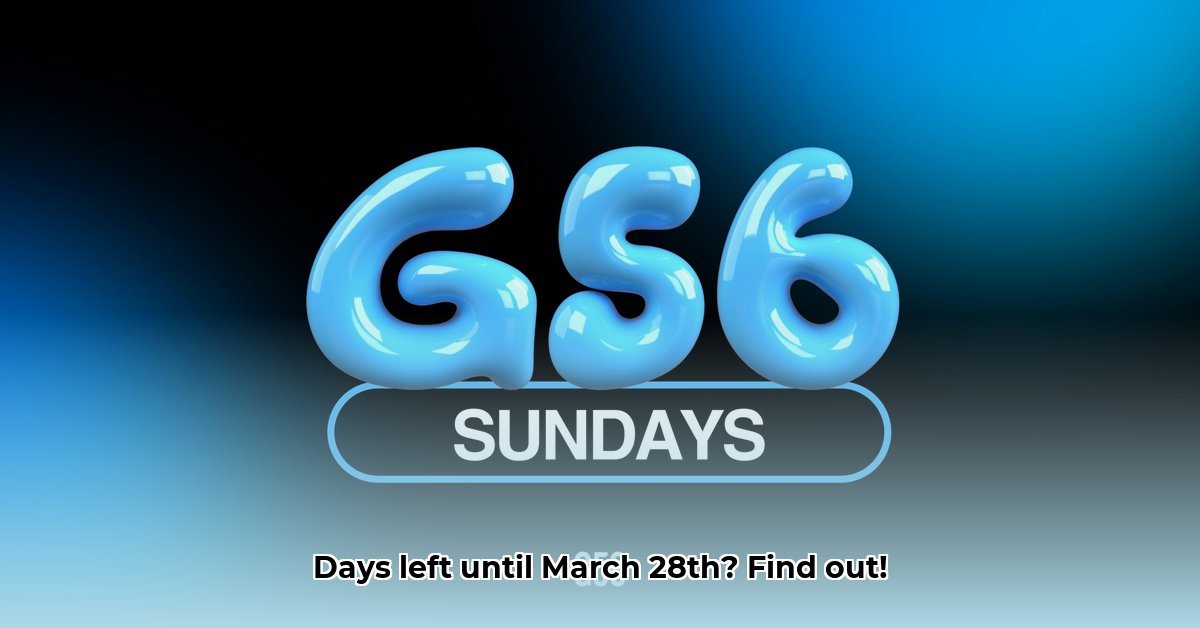Calculating the precise number of days until a specific date, like March 28th, can be more complex than it initially appears. Discrepancies between online calculators and apps often arise due to overlooked factors. For accurate time zone conversions, check out this helpful resource: Trinidad time. This guide provides a comprehensive understanding of these challenges and offers practical solutions for accurate date and time calculations.
Unraveling the Discrepancies: Time Zones, Leap Years, and Computational Variations
Several key factors contribute to variations in date calculations:
-
Time Zone Complexities: A day doesn’t dawn simultaneously across the globe. While it might be 10:00 AM on March 27th in New York City, Sydney residents could already be celebrating March 28th. Ignoring time zone differences can lead to discrepancies of up to a full day. Consider the intricacies of coordinating deadlines in international projects with team members scattered across different time zones. Accurate calculations require careful consideration of each individual’s local time.
-
Leap Year Precision: Leap years, with their extra day in February, introduce another layer of complexity. Accurate implementation of the leap year rule (divisible by 4, except for century years not divisible by 400) is crucial. For example, the year 2000 was a leap year, while 1900 was not. This seemingly minor distinction can significantly impact long-term calculations, especially when dealing with multi-year spans or recurring events.
-
Computational Nuances: Even subtle variations in algorithms or code used by different date calculators can produce discrepancies. Two seemingly identical programs can yield slightly different results due to underlying logic variations. These discrepancies can accumulate over time, leading to noticeable inaccuracies, especially in applications requiring high precision.
Strategies for Accurate Countdowns: Best Practices for Users and Developers
Achieving precise date calculations requires a meticulous approach. Here’s a breakdown of best practices for both end-users and developers:
For Users:
-
Time Zone Specification: Always specify your target time zone when using online calculators or apps. Using Coordinated Universal Time (UTC) provides a consistent and reliable reference point, eliminating ambiguity caused by varying local times. This practice is essential for accurate comparisons and avoids potential confusion when coordinating events across different regions.
-
Cross-Verification: Compare results from multiple reputable sources. If discrepancies arise, further investigation is warranted to pinpoint the source of the variation. This step helps ensure accuracy and identifies potential errors in individual calculators or algorithms.
-
Understanding Leap Years: Familiarize yourself with the leap year rule to identify potential errors in calculations. Knowing that years like 2100 will not be leap years, despite being divisible by 4, helps in accurate long-term planning.
For Developers:
-
Leveraging Reliable Libraries: Employ established date/time libraries (like Python’s
datetimeor Java’sjava.time) that handle time zones and leap years correctly. These libraries provide a robust foundation, minimizing the risk of introducing errors through custom implementations. They also offer built-in functions for handling complex scenarios like Daylight Saving Time (DST) transitions. -
Comprehensive Testing: Rigorous testing across various time zones, including leap years and DST transitions, is essential for guaranteeing accuracy. Test cases should cover a wide range of scenarios, including edge cases and boundary conditions, to ensure the code functions reliably under all circumstances.
-
Detailed Documentation: Clearly document the time zone handling and calculation methods used in your code. This practice facilitates debugging, enhances maintainability, and promotes transparency for other developers working with the codebase. It also allows users to understand the underlying calculations and interpret the results accurately.
Mitigating Potential Pitfalls: Addressing Accuracy Challenges
The inherent complexities of time and date calculations can lead to minor discrepancies even with meticulous planning. Factors such as leap seconds and variations in the Earth’s rotation can introduce slight deviations. However, by adhering to the best practices outlined above and utilizing reliable resources, you can minimize errors and achieve highly accurate date and time calculations. For users, understanding the potential sources of discrepancies empowers them to interpret results critically and choose appropriate tools. For developers, employing robust libraries and rigorous testing practices are crucial for building reliable and accurate applications.

















1 thought on “How Many Days Till March 28: Accurate Countdown & Timezone Fix”
Comments are closed.